
|
“I’m forever blowing bubbles” Part 2 An Eccentric Gallery by Richard L. Howey, Wyoming, USA |
“Double, double, toil and trouble,
Fire burn and cauldron bubble.” Shakespeare, Macbeth
Fortunately, we don’t need a cauldron nor a filet of fenny snake, just the bubbles. Taking photomicrographs of bubbles can be as much fun as it is a challenge. The process can be tricky since one needs to have a soap, detergent, gel, gum, or mounting medium that can sustain the bubbles long enough for us to get our images and ideally will gradually dry and produce yet other diverse and interesting forms. The physics and chemistry of the processes are sufficiently complex that few cases can be so fully understood as for us to be able to predict what types of results one might obtain. As we experiment and try adding various substances to our mixtures, we can discover everything from scenes that look like alien landscapes to whimsical abstract paintings. Additionally, there may be areas on the slide where no bubbles appear, but the mixture produces intriguing images nonetheless. Again, this gallery barely scratches the surface in terms of possible sorts of combinations and experiments. Here, as in the previous gallery, the primary source for producing bubbles is denture powder, but I hope in the future to find time to investigate club soda, a sugary soda (since sucrose by itself often generates wonderful crystals), hydrogen peroxide, and using a micro-pipet blow air into gels, glue, and mounting media mixtures to generate the bubbles.
Due to unforseen circumstances, I was very late in putting this gallery together and so it will indeed be bare bones with almost no description and instead some bits of rather fanciful free association. I will give you a list of the substances used to make the various combinations and, from there, you’re on your own. You can try different mixtures and see if you can produce similar results. After all, why should I do all the work? Have fun:
Denture powder, Purell sanitizer, Magnesium sulfate, Urea, Tacky glue, Ascorbic Acid solution, Dish washing soap, Glycerine, Toludine Blue, Methylene Blue, CMC-10 mounting medium.
Let’s begin with a small cluster of bubbles which have a frothy, silvery appearance.

Here I will give you a hint regarding another crucial factor in the production of various bubble images; illumination! This is crucial in that sometimes, just by shifting the angle of the light one can get some very interesting transformations. Also, with some images, I used a circular ring LED epi-illuminator which can on occasion transmogrify the ordinary into the extraordinary.
The next image is golden rather than silvery and gives you a hint of the pentagonal “packing” that takes place with groups of bubbles.

Such packing is much more evident in this next image.

Next is a set of 7 small bubbles lit in such a manner as to give them a “floating” dimensional quality

And now a wee bubble fish feeding on colorful plankton (I warned you I would be giving you some fanciful associations).

And next a golden bubble bot–a relative of R2D2.

Sometimes wonderful surprises occur and as you can see in this next image the head of a tiny jumping spider appeared. Well, O.K., it isn’t really, it’s just bubbles, but the eyes look almost exactly like those of the spider. This effect was achieved by a shift of the illumination.

The next two I think of as rather like petroglyphs, the first perhaps a primitive map showing where small reservoirs of water are located and the second, a warrior in battle with some primitive beast.


With certain preparations, I have gotten crystals along with bubbles like black holes encircled by four edges of light as you can see in the next 3 images.



Textures will vary according to the kind of substances used in given mixtures. In the next 3 images, one of the components was a sticky glue which dries clear, so obviously I mixed some other things with it (which is for you to figure out).



Then one evening, something extraordinary must have happened; I gather that Joan Miro snuck into my lab with some tubes of paint and enhanced several of my images.
(Actually, a bit of computer magic was in play.)





Sometimes crystals dominate and the mixture takes on a quite different form. For the next 2 images, I’ll tell you what was involved. I mixed denture powder with drops of concentrated Magnesium sulfate.


The last 8 images could well be taken from the walls of a museum of modern abstract art.
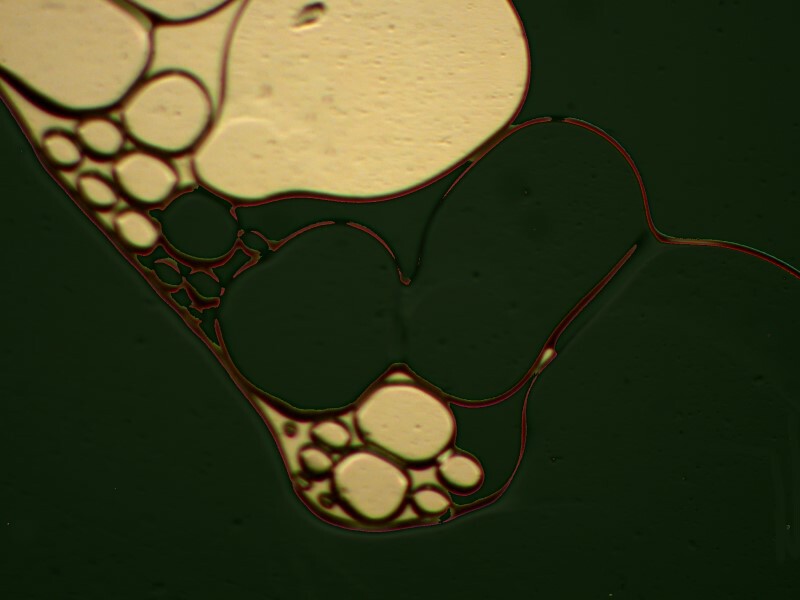
I particularly like the subtlety of the “outlining” of the central forms in this image.
Both the color contrast and the positioning of the bubbles balance out nicely in this image.
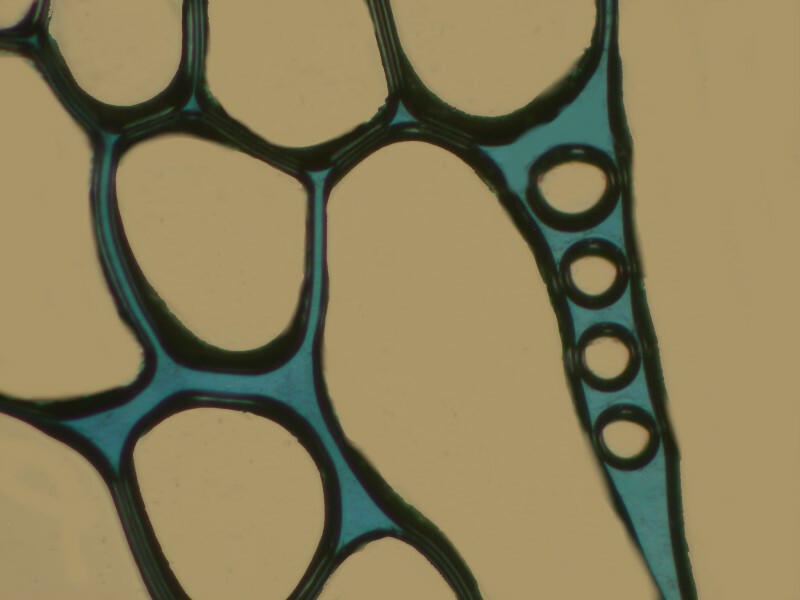
Bright and busy, but I like it.
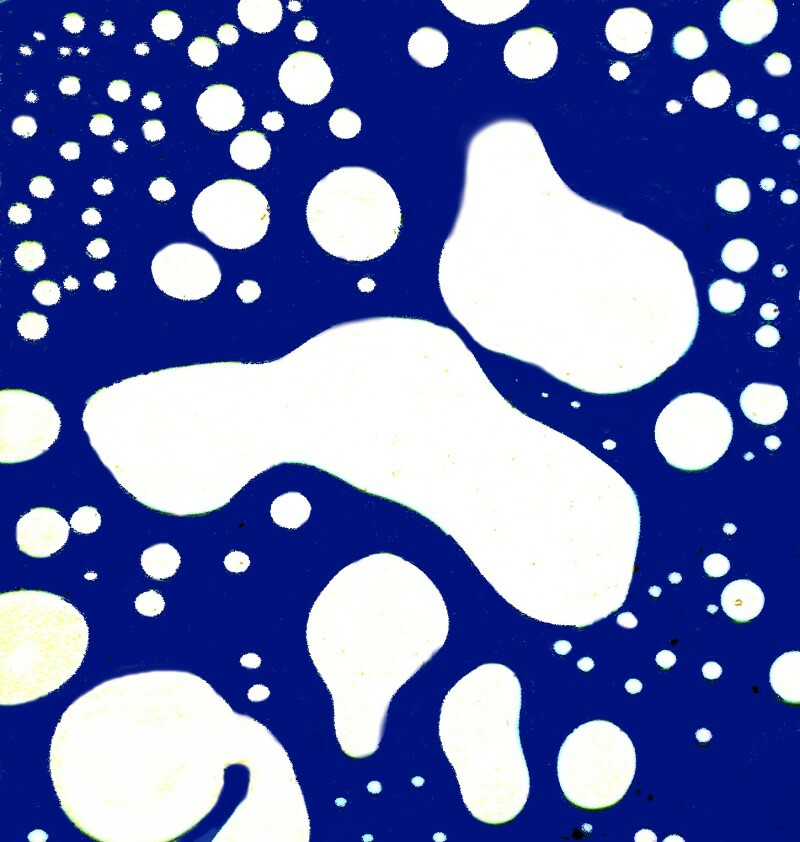
The next 4, my wife, thought look like pieces of alien jewelry.
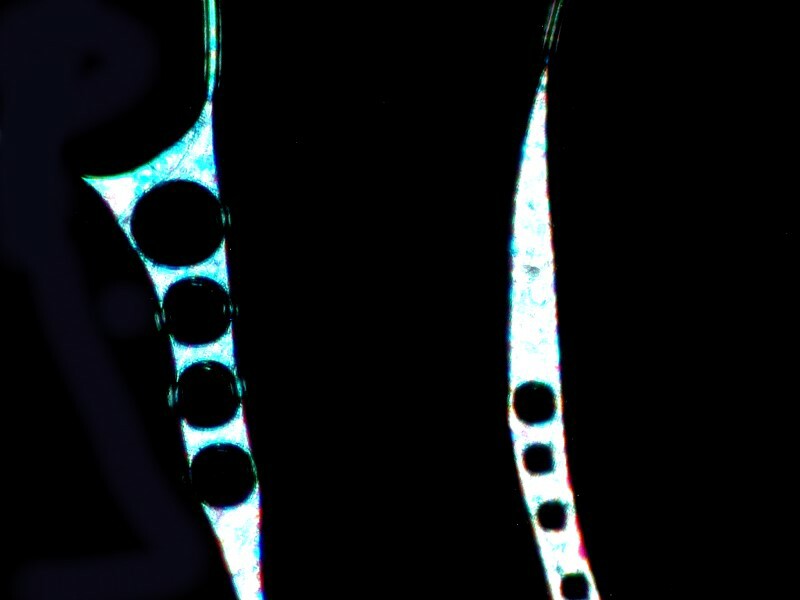
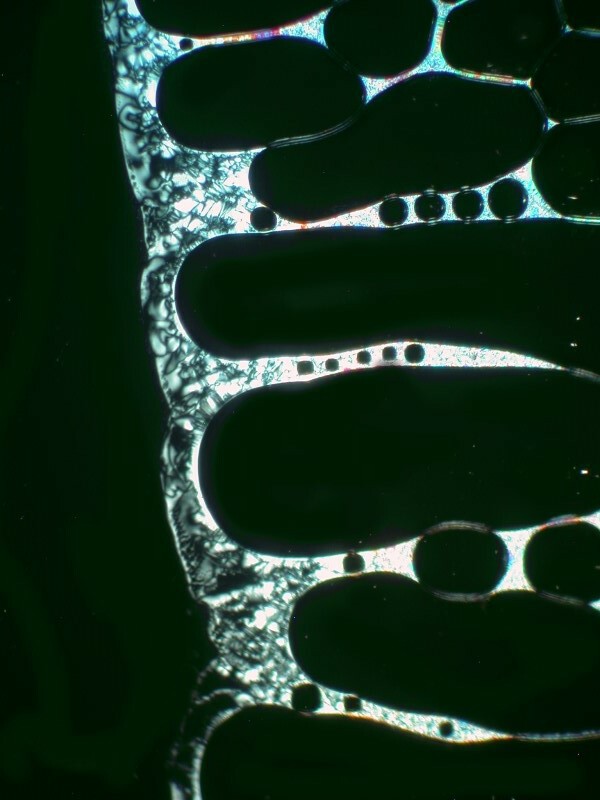
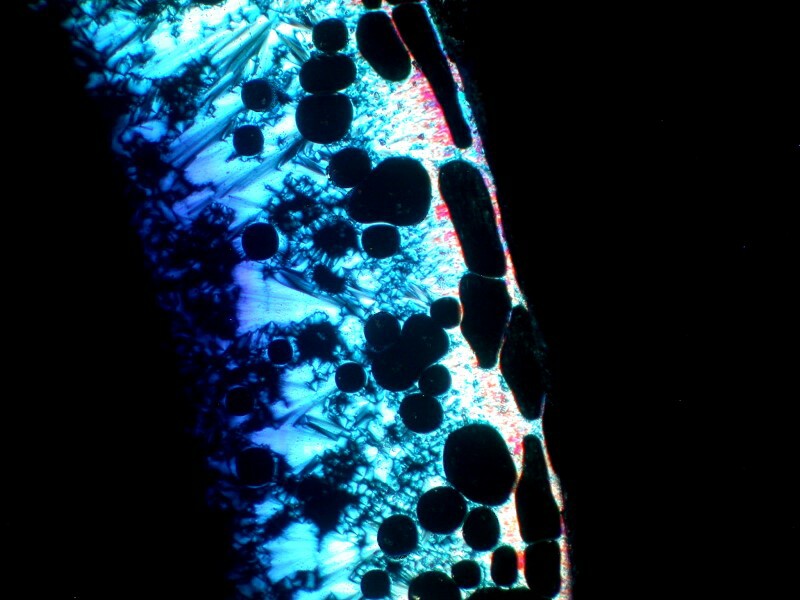
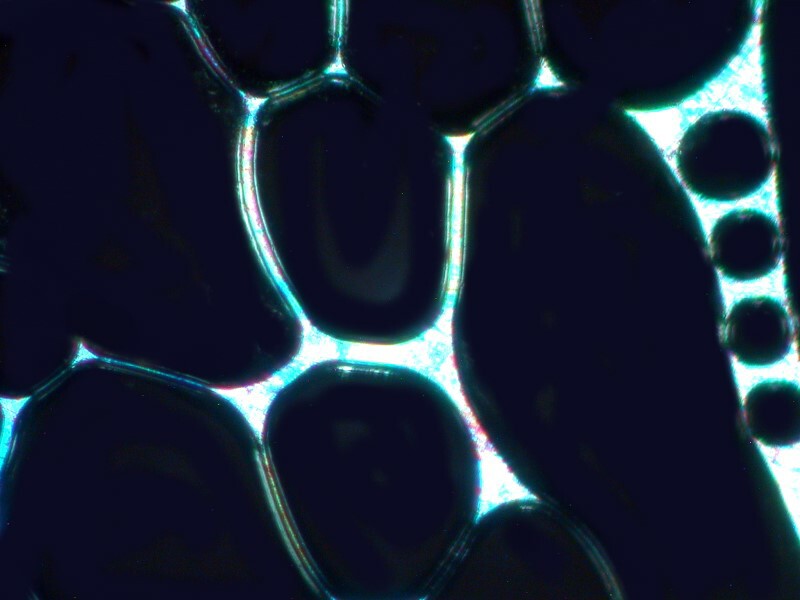
And finally bubbles along with some texture.
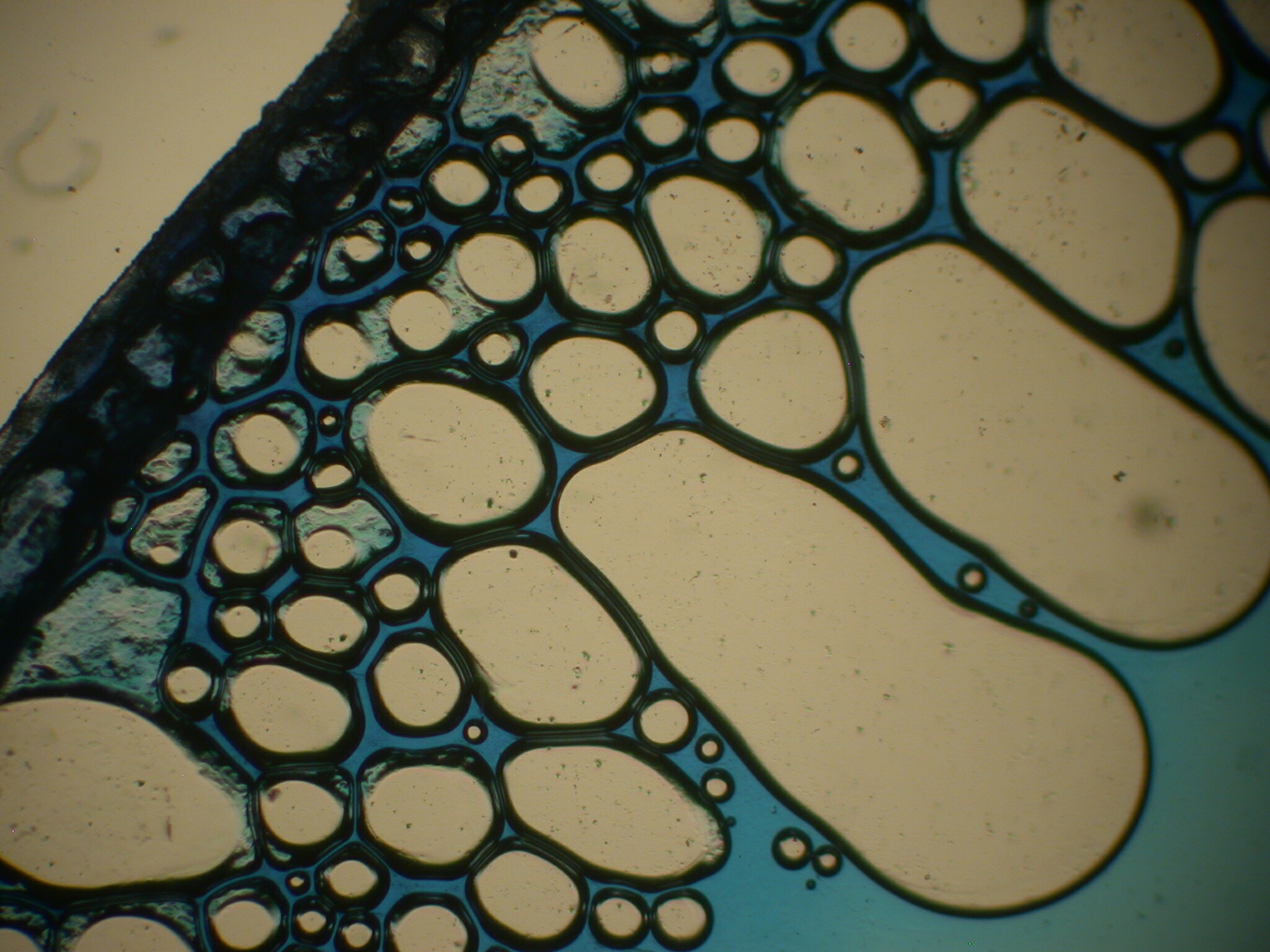
I hope you enjoyed this brief excursion and that you will try out some experiments of your own.
All comments to the author Richard Howey are welcomed.
Editor's note: Visit Richard Howey's new website at http://rhowey.googlepages.com/home where he plans to share aspects of his wide interests.
Microscopy UK Front
Page
Micscape
Magazine
Article
Library
Published in the November 2017 edition of Micscape Magazine.
Please report any Web problems or offer general comments to the Micscape Editor .
Micscape is the on-line monthly magazine of the Microscopy UK website at Microscopy-UK .
©
Onview.net Ltd, Microscopy-UK, and all contributors 1995
onwards. All rights reserved.
Main site is at
www.microscopy-uk.org.uk .